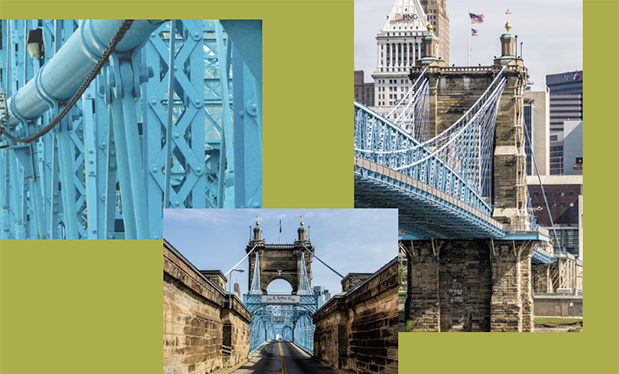
Recently, I read two interesting articles about trades and colleges. Both showed the struggle the U.S. is going through reconciling its posture on four-year college degrees and the many careers that do not require them. The articles offered different approaches to the same macro situation.
The Associated Press kicks off with the headline: “Jaded with education, more Americans are skipping college.”
Even 18-year-olds, as carefree as they might be, are increasingly skeptical of taking on $100,000 or more in debt to get jobs that can’t repay the loan.
The gist of the AP article was college enrollment has dropped 8% and we now face a national crisis that must be addressed or “the impact could be dire.” Nationwide, high school graduates immediately going to college declined from 66% in 2019 to 62% in 2021, according to the Bureau of Labor Statistics.
Higher education stakeholders are sounding the alarm, lobbying and arguing that bold action must be taken to reverse this decline. During my time in government, whenever a policymaker called for bold action, that usually meant throwing more money at the problem; rarely does it mean boldly (or even minorly) structurally changing or addressing the issue at hand.
Tennessee serves as a case study on this approach.
The AP article says: “In Tennessee, education officials issued a ‘call to action’ after finding just 53% of public high school graduates were enrolling in college in 2021, far below the national average. It was a shock for a state that in 2014 made community college free, leading to a surge in the college-going rate. Now, it’s at its lowest point since at least 2009.”
It’s free, but enrollment rates are declining! Why? Well, any economist (or 18-year-old) will tell you opportunity cost is still a cost and often a significant one. In other words, the financial cost of something is not the only consideration. Students may be considering time spent and time lost that could have been used doing something else, missed opportunity, etc. My kids playing video games all day is “free,” but my wife is quick to point out the opportunity costs of doing so.
This reminded me of another article I saw about Quintin Scott, a Chicago public school student who received a scholarship to go to a four-year college but turned it down to continue training as a welder. The time spent going to school (for free) is still time not spent earning a living and progressing on an alternative career path.
The AP article continues: “Across Tennessee, there’s a growing concern the slide will only accelerate with the opening of several new manufacturing plants” that “already are drawing young workers.”
So construction got a shoutout, but it was framed as a point of concern rather than excitement. However, the author did acknowledge “if there’s a bright spot, experts say, it’s that more young people are pursuing educational programs other than a four-year degree. Some states are seeing growing demand for apprenticeships in the trades, which usually provide certificates and other credentials.”
But that’s an outlier in the story. The author gave doomsday anecdotes from multiple higher education leaders and states and concluded with “Indiana’s higher education chief went so far to declare the ‘future of our state is at risk.”
I’m going to go out on a limb and guess Indiana’s future will be OK with marginally lower college enrollment levels, but the state won’t be OK if its manufacturing and construction flight continues or there are no skilled workers in the state because there is only one publicly acceptable, government-promoted path to a future.
The first mindset appears to be twofold: The education establishment is worried because its customer base is declining, and the nation is at risk because marginally fewer people are going to college.
Mindset No. 2 is succinctly summarized and reported by NPR in the article “Community college enrollment is down, but skilled-trades programs are booming.”
The NPR reporter states: “While a shortage of workers pushes wages higher in the skilled trades, the financial return from a bachelor’s degree is softening even as the price and the average debt into which it plunges students remain high. But high school graduates have been so effectively encouraged to get a bachelor’s that high-paid jobs requiring shorter and less expensive training are going unfilled. This affects those students and also poses a real threat to the economy.”
Parents are increasingly shifting toward mindset No. 2. NRCA recently reported on a survey by Multiverse, a professional development company, of more than 1,000 parents of children ranging in age from 12-19. The survey found:
- 64% of parents said they would be somewhat or very supportive if their child did not want to get a college degree. This number was higher for younger parents; 71% of parents aged 25-34 said they would be supportive compared with 57% of parents aged 55-64.
- 69% of respondents said they would be totally supportive if their child entered the workforce instead of going to college after high school. Only 20% cited cost of college as a factor. (There’s the opportunity cost factor poking through again.)
- Of those surveyed, career potential and skill preparation were the crucial factors in making the decision, and 78% said they had heard about apprenticeships as a post-high school option.
It’s likely these two mindsets will grow more pronounced in the years ahead as the college-or-bust crowd gets more vocal and the career-without-college cohort has more data and personal stories of success. As with most things lately, the debate will be loud, contentious and probably costly, but I hope we ultimately land in a workable spot for our current and future workers as well as our economy. It’s going to be an interesting journey.
MCKAY DANIELS is NRCA’s CEO.
mdaniels@nrca.net



